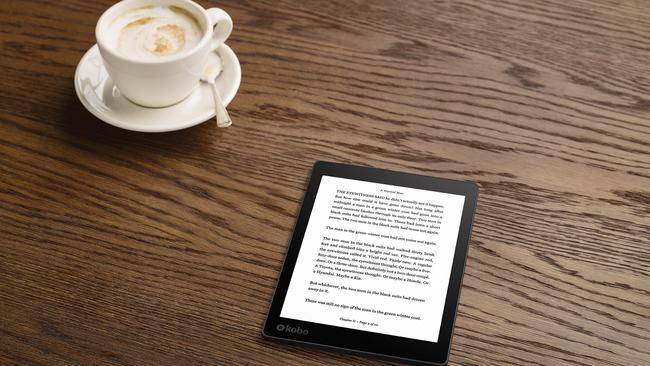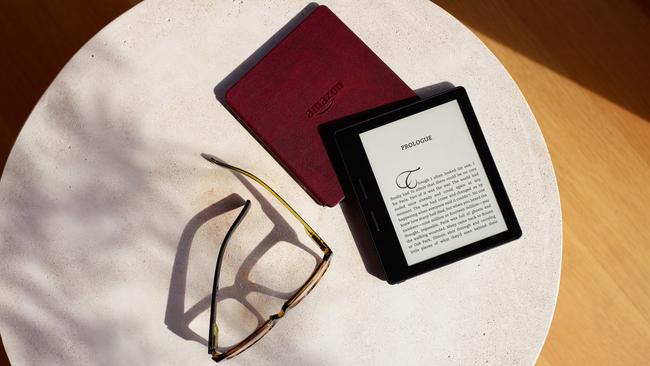New generation of e-book readers emerge to prove the electronic book revolution is still coming
A new generation of e-book readers with better screens and more features is emerging to fight rumours the e-reading revolution has stalled.

“THE E-BOOK reader is dead.”
It’s a rumour regularly followed by tales of a tablet takeover, and a lack of new dedicated reading devices.
There’s just one problem: it’s not true.
Electronic books now make up more than 30 per cent of book sales in some markets, the people who own them are among the world’s most voracious readers, and new models this year make the original e-book readers look like dusty old tomes.
E-BOOK RIVALS: Kobo takes on Amazon with big-screen device
TABLET THREAT: E-books face fierce competition from tablet computers
Battery-powered books first emerged in 2007, with Amazon’s Kindle winning plenty of attention for its eye and battery-friendly technology, and its ability to fit an entire library into a small carry bag.

Almost 10 years later, electronic books made up 32 per cent of all books sold in the US in April, according to the Codex Group, and people who use e-book devices are out-reading print fans.
While e-book users represent just 34 per cent of the population, the Group found, they are responsible for 59 per cent of book sales. For this group, e-book reading is far from dead.
“I’ve heard, ‘surely we’re done with e-readers now” since 2011,” Rakuten Kobo chief executive Michael Tamblyn says.
“But what we see is people who are willing to invest more in a premium e-reading experience.
“When we first started work on it, we weren’t even sure there was a premium e-reading market. This now represents 20 per cent of our sales.”
Kobo’s new e-book reader is filtering into stores like Myer and JB Hi-fi this month, a device lauded for its larger than average screen and unique take on bedtime reading.
The $350 Kobo Aura One features a 7.8-inch screen — 65 per cent larger than competing models — and screen illumination that filters out the blue light blamed for keeping people awake at night. It’s also water-resistant for confident poolside reading.
Tamblyn says the company asked its most prolific readers, “people who are reading two books a week,” to sit down with industrial designers, and create their dream device.
Retaining waterproofing was important to them, he says, but of even more value was seeing “more words on the screen”.
“They wanted something that looked more like a big paperback or a hardcover book,” he says. “They wanted a full page on the screen.”
The device’s blue-light filter, he says, is designed for healthier night-time reading. Blue light is often blamed for interrupting humans’ circadian rhythms and, Tamblyn says, “we wanted to make sure the only thing keeping you up at the end of the day was the story you’re reading and not the device you’re reading it on”.
Kobo still faces plenty of competition from Amazon, however.

The company this year replaced its top model e-book reader with a device at the opposite end of the size chart.
The Kindle Oasis features a six-inch screen but looks significantly smaller — almost like a pocket square — and features a cover with a hidden battery, automatic lighting, and a new reading-friendly font.
More recently, Amazon also launched a thinner, lighter, $109, entry-level Kindle to attract new readers.
Tamblyn says many people are coming back to electronic books for their convenience, but print readers are also eyeing off the new e-book devices now they offer more than just a paper replacement.
“We’re really excited to introduce ourselves to people who are looking at e-reading for the first time,” Tamblyn says, “and also to find those people who bought an e-book reader in 2010, 2011 and show them how far the technology has come.”



